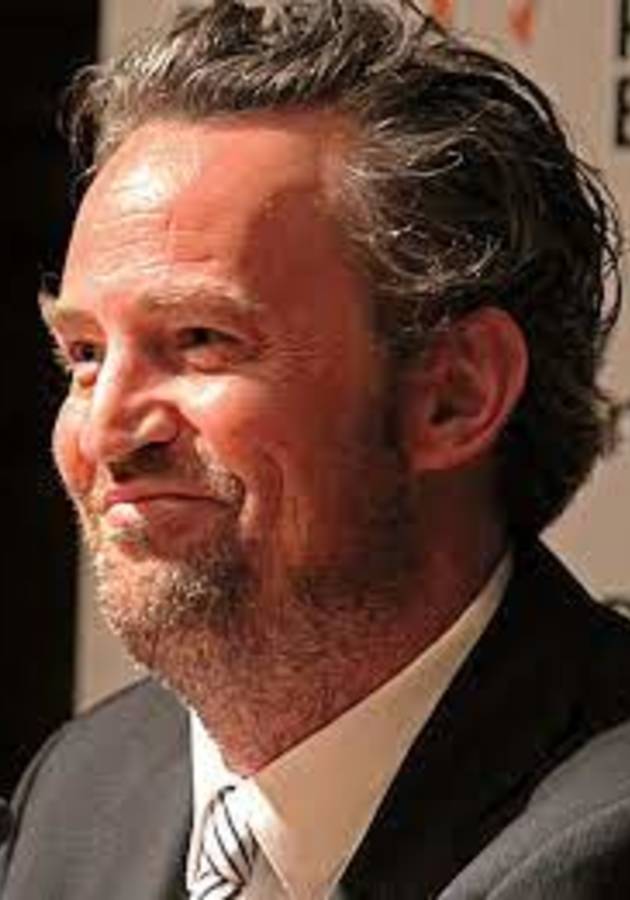Even if you don’t know who Shonda Rhimes is, you certainly know what Shonda Rhimes has done so far: she is, after all, the creative force (both the writer and the producer) behind three top-rated TV shows: “Grey’s Anatomy,” “Private Practice,” and “Scandal.”
However, if you think that “Year of Yes” is just another familiar rags-to-riches story or look-how-successful-I’ve-become vanity memoir – think again. It’s actually much more a book about happiness. And, unlike most of them, it’s not so much about what you should do to be happy, but about what you shouldn’t. It’s also an intimate account of how Shonda Rhimes became Shonda Rhimes and what she would have done differently if she could go back in time and change things.
So, get ready to get to know the creator of your favorite TV shows up close and personal – and prepare to say “yes” with her to everything that scares you.
Meeting your idols – and dreaming your life away
Born in Chicago as the youngest of six children to a college professor (her mother) and a university administrator (her father), Shonda has been an introvert ever since she could remember.
Her favorite hobby as a child was playing pretend with food items. She had a habit of hiding in her mother’s pastry and developing stories in which the green beans were ruled by the yams, and the tomatoes plotted an overthrow. She was, in every sense of the phrase, a storyteller from birth.
So, unsurprisingly, after attending Marian Catholic High School, she went on to earn a Bachelor of Arts at Dartmouth College in English and film studies. There she started dabbling in much more serious make-believe games, joining the Black Underground Theater Association, and directing numerous student productions. She also acted in some of them, writing fiction in the meantime.
It was the beginning of the 1990s, so it’s only natural that, at the time, Shonda dreamt of becoming the next Toni Morrison, the first black woman to win a Nobel Prize. Interestingly enough, after Shonda became Shonda Rhimes, she had the privilege to have dinner with her early-life idol. The thing they talked about? “Grey’s Anatomy,” one of Shonda’s TV shows.
Now, how did that happen? How did her make-believe stories transformed from being inspired by Morrison to being closely followed by her? Or, to put that in more general terms, how does one evolve from being just a regular person dreaming a dream to an exceptional one living it? Well, Shonda has pretty straightforward advice and one that goes against the currents of common self-help philosophy.
She writes: “They tell you: Follow your dreams. Listen to your spirit. Change the world. Make your mark. Find your inner voice and make it sing. Embrace failure. Dream. Dream and dream big. As a matter of fact, dream and don’t stop dreaming until your dream comes true. I think that’s crap. I think a lot of people dream. And while they are busy dreaming, the really happy people, the really successful people, the really interesting, powerful, engaged people? They are busy doing.”
In other words: dreaming is easy; doing the work necessary to turn that dream into a reality is what’s really difficult.
Happiness is the price you pay for success
Most people know that happiness and success are intricately related, and they instinctively agree that the former must follow from the latter. Let’s just say that they are right and that you can’t be happy unless you are successful – whatever your definition of success is. Now, let’s turn the equation around and ask ourselves one much more important – though much less discussed – question: can a person consider oneself successful if unhappy?
What Shonda Rhimes discovered on her way to becoming one of the most respected people in the film industry was quite a bleak lesson: it's the other way around. In other words, being happy means being successful as well; being successful, on the other hand, doesn’t necessarily mean being happy. Even worse: success might be a serious obstacle on your road to happiness. Or success might precisely be what prevents you from being happy. After all, to become successful, you usually need to sacrifice a few things: everything from family dinners to hanging out with friends to enjoying life’s little pleasures. The problem is that these are usually the things that make life worth living and that successful people tend to realize this a bit too late.
It’s even worse if you want to be successful in the movie industry: you can’t allow yourself a break in Hollywood. If you are a writer, however, this usually translates to countless solitary, sleepless, and stressful nights. After all, even the muses need to take some time to rest from time to time – but you can’t. Meaning: you have to pen the next script even when you don’t have the inspiration to do so. To make matters worse, no matter how lonely and insecure you feel, you mustn’t show this before anyone. Because nobody has the time to deal with an anxious person with panic attacks in a world where new episodes must come out each week, and new TV shows are constantly created, pitched and produced.
Getting out of the vicious cycle: the year of yes
Shonda' way out? The obvious one: gobbling up her feelings. Quite literally: whenever she felt sad or under pressure (so, basically, all of the time), Shonda just wouldn’t stop eating. And, of course, after she realized that this method gained her some weight, she also felt so depressed that she had to start eating some more. That, in turn, resulted in the loss of self-confidence and crippling self-doubts because of which Shonda could barely make herself leave the room. “What will other people say when they see me?” – she wondered.
So, she started refusing all kinds of invitations: Hollywood parties, TV interviews, award ceremonies, gala nights, dates… The only thing that made sense to her was solitary work. And then even it seemed pointless, and life altogether stopped making sense. Everybody dreamt of becoming the next Shonda while Shonda dreamt of becoming the girl next door.
Fortunately, one day, Shonda’s publicist accepted a dinner invitation on her behalf from then-U.S. President Barack Obama and the first lady. It took some convincing but, eventually, Shonda agreed to go. This turned out to be one of the most important decisions of her life: after an amazing evening, Shonda realized, with an uneasy feeling, that if her publicist had asked for her opinion before saying “yes” to the invitation, she wouldn’t even go to the dinner gathering.
She finally recognized that there must be another way: rather than being a wallflower watching the world go by in front of her very eyes, maybe she could try and take participation instead. And just like Danny Wallace in “Yes Man” – or Jim Carrey in the loose adaptation of this book – she decided to say “yes” to any offer that would come her way. 2015 wasn’t an exceptional year for most of us. But in Shonda Rhimes’ vocabulary, 2015 will forever be defined as her “Year of Yes.”
The three most important “yeses”
The first thing Shonda said “yes” to was her social life. Unsurprisingly, this led to a few memorable experiences that wouldn’t have happened in any other way – such as being photographed by Annie Leibovitz and being interviewed (for the first time) for “Good Morning America!” Besides, this led her to organize a fundraiser for the Democratic National Committee and numerous unforgettable hangouts with the cast of her show – which finally got to meet the real Shonda. And, contrary to her fears, they enjoyed the company quite a lot.
The second thing Shonda said “yes” to was her family. She adopted her first child back in 2002, and her second and third in 2012 and 2013. However, before her “Year of Yes,” she didn’t have that much time for Emerson, Beckett, and Harper. In 2015, she decided that not having time was not a way for anyone to live their life. So, she started saying “yes” every time her children would ask her to play with them. And she stopped working during the weekends so that she could dedicate herself fully to her family for at least two days a week.
It wasn’t always like that. When she adopted her first child, a friend asked whether she had started interviewing for a nanny. Shonda was furious: “Why would I want to adopt a child if I plan to make it someone else’s problem?” – she yelled. However, soon enough, would she realize that real life doesn’t work the way movies do. In real life, it is quite tricky to balance family and work. Especially if you are in Hollywood.
It was Shonda Rhimes’ supernanny, Jenny McCarthy, who – in her own words – first helped her realize that one person can’t do it all and, then, ironically, helped Shonda do pretty much that – or, at least, as much as is humanly possible. With Jenny having her back, Shonda felt much more confident both as a mother and as a human being and started acting with much more assertiveness in life. This inspired her to say “no” once in a while as well – when that “no” secretly meant “yes” to something else. Because a “no” to self-depreciation is actually a “yes” to compliments. And a “yes” to compliments leads to just the perfect amount of self-love. And that is the only valid starting point of a healthy interhuman relationship.
During her "Year of Yes," Shonda Rhimes lost 117 pounds (53 kilograms). Now, you can say that it’s because of exercising and dieting and you won’t be wrong. However, the real, underlying reason is something else: a newly discovered capacity for self-love.
The main lesson: the one rule of happiness
Many ways directly affect our happiness: our health, our love lives, our jobs, our friends, our finances – and even whether you’ve found the perfect parking spot this morning. Unfortunately, to be happy, you need to put a mark next to all of the checkboxes, and you can be unhappy if only one of them – any one: love, friends, family, work – is left empty.
This explains why it is so much more difficult to be happy than remain miserable in life. What it doesn’t explain, however, is how you can be happy most of the time. In Shonda Rhimes’ opinion, though, at least in a way, it does. See, if there are so many things that affect our happiness, and if each of us is different and unique – then everyone who says to have found the formula for happiness is lying. There is no such thing: the only way to attaining happiness is your way.
“There is no list of rules,” Shonda writes. “There is one rule. The rule is: there are no rules. Happiness comes from living as you need to, as you want to. As your inner voice tells you to. Happiness comes from being who you actually are instead of who you think you are supposed to be. Being traditional is not traditional anymore. It’s funny that we still think of it that way. Normalize your lives, people. You don’t want a baby? Don’t have one. I don’t want to get married? I won’t. You want to live alone? Enjoy it. You want to love someone? Love someone. Don’t apologize, don’t explain, don’t ever feel less than. When you feel the need to apologize or explain who you are, it means the voice in your head is telling you the wrong story. Wipe the slate clean. And rewrite it. No fairy tales. Be your own narrator. And go for a happy ending. One foot in front of the other. You will make it.”
So, that’s the one rule of happiness: don’t listen to others telling you how you can make yourself happy. It won’t work – because you’re a unique individual. Following your inner voice should work much better. Even if that means having no family of your own or being less than successful in your profession. For some people, happiness is having a coffee with their high school friends once a week. And why shouldn’t it be?
Final Notes
“Year of Yes” is – to quote a review – “as fun to read as Rhimes’s TV series are to watch.”
So, if you enjoy rapid-fire dialogue, poignant moments, great punchlines, and unforgettable life lessons – you’ll enjoy this memoir as well.
Raw and revelatory, “Year of Yes” is as life-affirming as its title.
12min Tip
To be successful, it’s not enough to just work really, really hard: you also have to take advantage of the opportunities that come your way. So, start saying “yes” to new experiences: life, in essence, is an experiment, so the more attempts you make, the better chance you have to obtain the desired result.





























